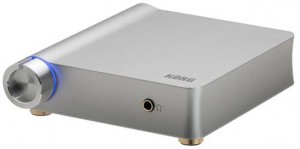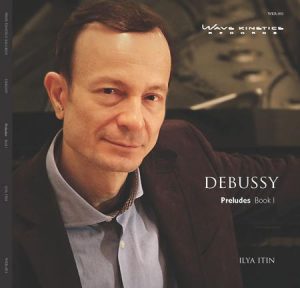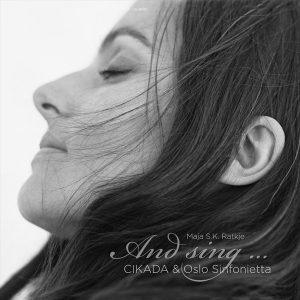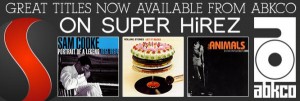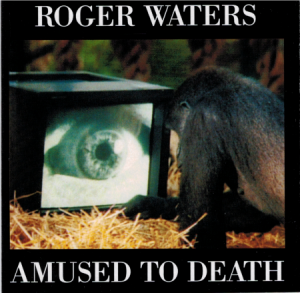This article was published recently by our good friends at NativeDSD.com (see HERE). In it, Ted Brady makes some useful distinctions and clarifies some definitions about DSD. Given the growing interest in DSD, and the excellence of Ted's commentary, it is our belief that this article will benefit the readers of Positive Feedback. His remarks are presented as they appeared at NativeDSD.com, with only light editing, mainly for formatting here at Positive Feedback.
We therefore republish it, with the kind permission of Ted Brady and Jared Sacks of Native DSD (www.NativeDSD.com).
Dr. David W. Robinson, Editor-in-Chief
In last month's Corner I mentioned that I would be summarizing some of the DACs I saw (but did not hear, unless in some strange room) at CES. Well... I guess I need to go to my corner again and "think about what you've done" because I find that a listing of the most recent DACs and their specs to be, er, well, boring as heck.
Chips, gate arrays, ladder technology…
Each of these new DSD-capable DACs has their own website and has either been released or is soon to be released. Some of them use SABRE chips, some use Burr Brown DSD1793 chips, some of them use FPGAs (field programmable gate arrays), some of them use R2R ladder technology and some of them don't even use digital chips at all... they simply take DSD and use aggressive analog filtering and transformers to block DC and then filter out the spurious noise (aka noise shaping) that comes along with trying to decode DSD in an analog medium.
Instead, I will talk "Native"!
What I do think is interesting (which means many of you won't!!) is the term "native". Heck, we use it on this website to describe our music selections. DAC manufacturers use it in their marketing literature to describe how they process DSD for the consumer. Even audiophiles and software player developers use it to describe how a USB or other digital connection handles DSD. It seems to be all things to all people... but it really has a definition, and in one case, it is being used quite improperly. So let's take a look. Why? Because at the root of all this is the theory that if something is direct and native, unconverted and pure, it has a better chance of sounding realistic and closer to the master recording once it gets through your system and out your speakers (or headphones).
The Three Different Purposes the Term "Native" Currently Has
1) Native DSD files
So, digital recordings can come from mainly three places: analog tape transferred to digital (either PCM or DSD), PCM digital recording or DSD digital recording. We call any of these three "native" when they don't go through any digital signal conversion (say, from DSD to PCM, or from PCM to DSD) and when they are then available at the sample rate and format they were initially captured digitally in. For this reason, NativeDSD.com makes sure that any DSD music that we sell online is either from analog tape transferred directly to DSD or from DSD recordings that do not go through any PCM conversion (note: up until recently some time slicing/editing must take place in PCM or the labels would have to sell you one long song; we still consider those recordings native since no real musical information was converted).
However, since we like to say "NativeDSD and beyond," we are also quite excited to provide ANY native recordings of great quality, and therefore open to offering labels that directly transfer analog tape to DXD (PCM sample rate of 24/352.8k) or any other true native recordings. This "and beyond" aspect is a much smaller part of our catalog, but offered nonetheless.
We feel that offering only native files will help us simplify the choices that music lovers need to make, with no real issues about where these files came from (provenance), or whether they are converted or up/downsampled without the users' knowledge. NativeDSD offers files in multiple DSD sample rates, and when these rates are not the original transfer, we highlight this simply as an option. (For example, if we have DSD128 native files, we will offer them at a reduced rate in DSD64 for those customers who have no DSD128 playback capability). We continue to ask you, the consumer, to hold us and our label partners to this promise, and to continue to hold other online offerings to as high a standard. If you don't know...ask!
2) Native DSD DAC processing
Back in 2011 I was asked by Jesus R of Simple Design/Sonore to help him start a DSD database of DAC manufacturers (the database link is here in our FAQ pages). Back then it was easy. We started with Mytek and a few others. Today there are hundreds of DACs that claim to be DSD-capable. We will put them in the DSD database if they accept DSF or DFF files directly (i.e., not converted to PCM upfront, before the DAC). What happens internally can be any number of steps and conversions. Then comes the analog stage(s) and power supplies, and finally the analog outputs. One could say that the ultimate end goal is musicality, and that would be true. But it has become more important to try and understand what happens internally, because it is not always the case that one can listen to dozens of DACs and make good listening conclusions. Also, online forums and discussion communities tend to throw around terms and comments that need to have some consumer perspective.
So, for those reasons I'd like to define two terms in the DAC world: Native DSD processing and its smaller subset, Native Direct DSD processing (aka Direct). In both cases the DSD signal is not converted to PCM and is therefore native. In the case of Direct the signal is not even processed digitally beyond being handled as a one bit signal. In my world both of these technologies have a good chance of producing beautiful DSD playback, given good power supplies and analog stages.
Examples of non-direct Native processing are when a DAC uses a SABRE 90XX chipset. The DSD signal is digitally processed, usually to 6 or 8 bits [This treatment of DSD is called "multi-bit," and is not at all the same as PCM. – Editor], but remains DSD and is treated with DSD filters (to remove noise shaping artifacts) and then sent to the analog side. One could argue that FPGA processing like PS Audio's Directstream, where one bit DSD is converted to 30 bit, 30Mhz, then processed "down" to DSD128, is another example of non-direct Native DSD processing. Meitner's upsampling to DSD128 falls in this category for me, too.
Examples of Direct Native DSD processing is when any of the TI/Burr Brown chipsets like 1792, 1793 and 1795 that support DSD processing are used in a DAC. They may also do PCM processing, but have a direct conversion process for DSD. Strangely, they may be labeled PCM1793 or DSD1793, and the only difference is the pin setups.
Other DAC chips that can be configured to do direct DSD conversion are such chips as CS4398, CS4364, CS4384, WM8741, WM8742, and AK4490. With these, it depends on the DAC manufacturer as to what DAC chip configuration parameters they choose.
Lastly, chipless designs like the Lampizator DSD DACs are direct native DSD implementations in that they use a complex set of DC blocking and analog filter stages to take a native DSD signal and convert it to straight analog.
There are a host of other technologies that live within the DSD-capable database of DACs. These designs may not keep DSD as DSD for lots of reasons: Digital volume control (requires PCM in almost all cases), dual format needs, better digital filtering schemes, etc. These designs may still sound quite musical, even superior to some of the above (likely due to better analog stages or more stable power supply topology), but cannot state that they include native DSD playback. Again, it is incumbent upon the consumer to hold these manufacturers accountable.
At the end of the day, the best way to determine musicality is an in-home demo or trial. But if that is not doable, at least try to understand how the DAC is processing those special NativeDSD music files you are buying.
3) "Native" ASIO DSD vs DSD-over-PCM (aka DoP)
Finally, audiophiles starting using the term "native" to describe sending DSD across USB using custom ASIO drivers (built by the DAC manufacturer) to differentiate from using the more ubiquitous DSD-over-PCM (aka DoP), which is a horrible name for a clever way of sending unconverted DSD across USB by way of a PCM container. [In Information Technology, we would use the term "encapsulation." – Editor] Since the term uses "PCM" as part of its description, many newbie audiophiles mistakenly think it is a lossy conversion to PCM. It is not, and therefore in no way is it any less "native" than using a custom ASIO driver (although it may use a percent or two more CPU to unpack).
So...my recommendation is to call direct DSD via ASIO (or Linux ALSA or I2S) "raw" DSD (to differentiate from packed DoP), meaning, let's not use "native" here... they are both native. After getting native DSD files, buying a native DSD DAC... let's not make DoP some sort of bad guy by using terminology that makes it sound un-native.
OK, off my soapbox!
[Ted Brady would like to thank Jussi of Signalyst and HQplayer for his assistance in sorting out the various DSD chipsets.]




